It looks like you're using an Ad Blocker.
Please white-list or disable AboveTopSecret.com in your ad-blocking tool.
Thank you.
Some features of ATS will be disabled while you continue to use an ad-blocker.
share:
reply to post by kimish
There used to be American 'camels' back then, or camelops. They became extinct together with the American horses. Or crossed the Bering Land Bridge together, direction Asia.
There used to be American 'camels' back then, or camelops. They became extinct together with the American horses. Or crossed the Bering Land Bridge together, direction Asia.
edit on 1/5/13 by Movhisattva because: from 'street' to 'Land Bridge'
reply to post by Movhisattva
I'm aware of that but I assumed modern day camel because the post said "camel" not "camelid" :/ Simple miscommunication...
Who's up with the next one!?
I'm aware of that but I assumed modern day camel because the post said "camel" not "camelid" :/ Simple miscommunication...
Who's up with the next one!?
reply to post by kimish
More on the
There is another site in the area that is extremely controversial because of its age
More on the
The Tequixquiac carving (also known as the Barzena carving after its finder) is a carving representing the face of a dog, wolf or coyote. It was carved from the sacrum of a leistocene and now long extinct camelid species.
The carving was found in 1870 by Mariano Barcena and published in 1882. The discovery was made at a depth of 12 m below surface in pleistocene deposits dasted to around 40,000 years in the valley of Mexico, 67.5 km (42 miles) north of Mexico City. The artefact was subsequently "lost" in the 1890s but re-discovered in 1956. Studies done on the carving have largely confirmed its authenticity although the age of the artefact remains unclear because we donot know whether the carving had been done soon after the animal's death or long after.
The carving is the earliest example of true art found in the Americas so far. The true purpose and meaning of the carving, as well as the culture that produced it, remain unknown.
The site also has produced stone tools (flakes, scrapers) and splinters of mammoth bones worked into awls.
There is another site in the area that is extremely controversial because of its age
reply to post by isyeye
The nearby site is controversial, but the bone is also controversial because its 40000 years old.
If one holds to a traditional view of human dispersal it should not be there.
The nearby site is controversial, but the bone is also controversial because its 40000 years old.
If one holds to a traditional view of human dispersal it should not be there.
reply to post by punkinworks10
Finds like that may debunk the out of Africa theory once and for all. Very interesting indeed.
Would that also be the time before Amerindians settled the western Hemisphere? I've always said that perhaps the "Indians" weren't the first ones to settle N. and S. Americas
Finds like that may debunk the out of Africa theory once and for all. Very interesting indeed.
Would that also be the time before Amerindians settled the western Hemisphere? I've always said that perhaps the "Indians" weren't the first ones to settle N. and S. Americas
edit on 1-5-2013 by kimish because: (no reason given)
Originally posted by kimish
reply to post by punkinworks10
Finds like that may debunk the out of Africa theory once and for all. Very interesting indeed.
Would that also be the time before Amerindians settled the western Hemisphere? I've always said that perhaps the "Indians" weren't the first ones to settle N. and S. Americasedit on 1-5-2013 by kimish because: (no reason given)
I hold some very controversial views on the subject of the populating of the new world, and one of those views is that the first humans into the new world weren't modern humans but a precursor, such as a cousin of the Neanderthals and denisovans, or even homo erectus.
There is also the view that at least one of the native American founding lineages, was just that native. They sepciated into developmentally modern humans in the new world the migrated back into eurasia before the lgm.
For very concise discussions on the subject of out of America theory can be found here
anthropogenesis.kinshipstudies.org...
And these discussions are very interesting in there implications.
anthropogenesis.kinshipstudies.org...
anthropogenesis.kinshipstudies.org...
Where are these ruins located?
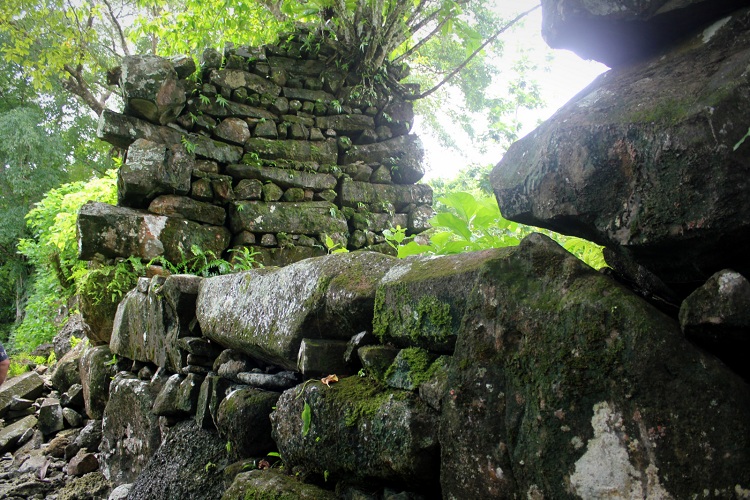
Hint: The style of the construction resembles many other ruins in that part of the world.

Hint: The style of the construction resembles many other ruins in that part of the world.
Originally posted by isyeye
Where are these ruins located?
Hint: The style of the construction resembles many other ruins in that part of the world.
Good one
Hope fully some one doesn't get it before I can look into it.
I have a guess but ill wait.
Ok people let's see who can figure this one out.
reply to post by isyeye
I'd say Chachapoyas Peru, cloudforest ruins in the neighbourhood of the Kuelap fortress?
I'd say Chachapoyas Peru, cloudforest ruins in the neighbourhood of the Kuelap fortress?
reply to post by isyeye
It's the enigmatic Nan madol on the island of pohnpei.
en.m.wikipedia.org...
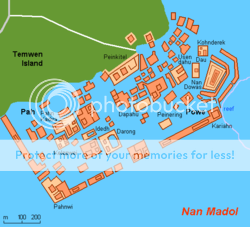
What gave it away was the stacked basalt in the tropical rainforest,
It's the enigmatic Nan madol on the island of pohnpei.
Nan Madol is a ruined city that lies off the eastern shore of the island of Pohnpei that was the capital of the Saudeleur dynasty until about 1628. [3][note 1] It is in the present day Madolenihmw district of Pohnpei state, in the Federated States of Micronesia in the western Pacific Ocean. The city consists of a series of small artificial islands linked by a network of canals. [3] The site core with its stone walls encloses an area approximately 1.5 km long by 0.5 km wide and it contains nearly 100 artificial islets—stone and coral fill platforms—bordered by tidal canals.
The name Nan Madol means "spaces between" and is a reference to the canals that crisscross the ruins. The original name was Soun Nan-leng (Reef of Heaven), according to Gene Ashby in his book Pohnpei, An Island Argosy. [9] It is often called the "Venice of the Pacific [10]
en.m.wikipedia.org...

What gave it away was the stacked basalt in the tropical rainforest,
reply to post by punkinworks10
Almost got it...It's not Nan Madol, but a site very close by on the island of Kosrae...The Lelu Ruins.
kosraenautilus.com...
Once again, you're close enough.
Your turn again.
Almost got it...It's not Nan Madol, but a site very close by on the island of Kosrae...The Lelu Ruins.
kosraenautilus.com...
Once again, you're close enough.
Your turn again.
edit on 1-5-2013 by isyeye because: (no reason given)
reply to post by isyeye
Well then that was an interesting read,
I wasn't totally correct, that is very generous of you Isyeye.
I can't help but notice just how closely their social structure resembles that of a certain andean society that has been the subject of possible contact with the polynesians.
Am working on next question.
Well then that was an interesting read,
I wasn't totally correct, that is very generous of you Isyeye.
I can't help but notice just how closely their social structure resembles that of a certain andean society that has been the subject of possible contact with the polynesians.
Am working on next question.
Ok here we go
This is Big Horn Medicine wheel.

And this is

Aztec ruins great kiva
And this
Grand chaco's
pueblo bonito
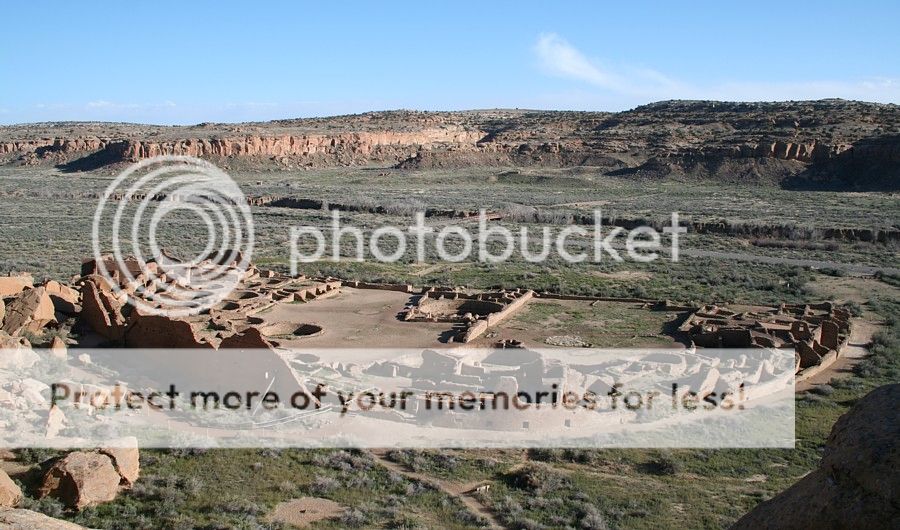
All of these structures have a spatial relationship.

This is tenochtitlan
Thus is Chichen Itza's Castillo pyramid
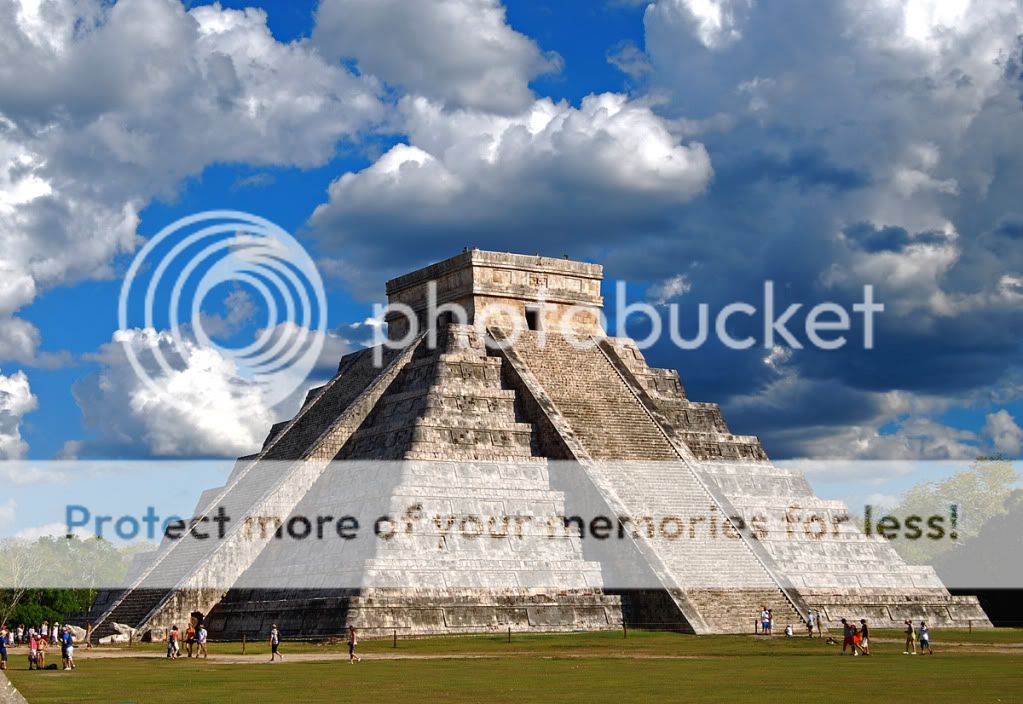
Both of these last two places have chaac mools

They share a spatial relationship with the first three locations, and with these seemingly unrelated places.
Whoa, how did Newgrange make its way back in?

And the Avesbury henge
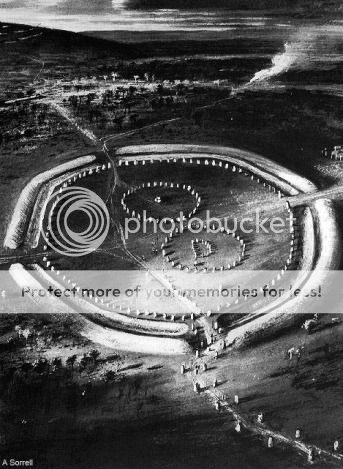
All of these seemingly unrelated places share an unshared knowledge.
This wonderous creation of Ptolymaic world has stirred up quite the controversial conversation of how advanced classical culture was.

This man was one of the most influential mindsvof the Ptloymaic world and was quite the mathematician.

And h ow does that all relate to this ancient Egyptian ship.

So my question is how are all of these seemingly unrelated places and times connected .
This is Big Horn Medicine wheel.

And this is

Aztec ruins great kiva
And this
Grand chaco's
pueblo bonito

All of these structures have a spatial relationship.

This is tenochtitlan
Thus is Chichen Itza's Castillo pyramid

Both of these last two places have chaac mools

They share a spatial relationship with the first three locations, and with these seemingly unrelated places.
Whoa, how did Newgrange make its way back in?

And the Avesbury henge

All of these seemingly unrelated places share an unshared knowledge.
This wonderous creation of Ptolymaic world has stirred up quite the controversial conversation of how advanced classical culture was.

This man was one of the most influential mindsvof the Ptloymaic world and was quite the mathematician.

And h ow does that all relate to this ancient Egyptian ship.

So my question is how are all of these seemingly unrelated places and times connected .
edit on 1-5-2013 by punkinworks10 because: (no reason given)
One of those references has nothing to do with the question at hand.
new topics
-
I hate dreaming
Rant: 23 minutes ago -
Is the origin for the Eye of Horus the pineal gland?
Philosophy and Metaphysics: 2 hours ago -
Man sets himself on fire outside Donald Trump trial
Mainstream News: 2 hours ago -
Biden says little kids flip him the bird all the time.
2024 Elections: 2 hours ago -
The Democrats Take Control the House - Look what happened while you were sleeping
US Political Madness: 3 hours ago -
Sheetz facing racial discrimination lawsuit for considering criminal history in hiring
Social Issues and Civil Unrest: 3 hours ago -
In an Historic First, In N Out Burger Permanently Closes a Location
Mainstream News: 5 hours ago -
MH370 Again....
Disaster Conspiracies: 5 hours ago -
Are you ready for the return of Jesus Christ? Have you been cleansed by His blood?
Religion, Faith, And Theology: 7 hours ago -
Chronological time line of open source information
History: 9 hours ago
top topics
-
In an Historic First, In N Out Burger Permanently Closes a Location
Mainstream News: 5 hours ago, 14 flags -
The Democrats Take Control the House - Look what happened while you were sleeping
US Political Madness: 3 hours ago, 10 flags -
Thousands Of Young Ukrainian Men Trying To Flee The Country To Avoid Conscription And The War
Other Current Events: 15 hours ago, 8 flags -
A man of the people
Medical Issues & Conspiracies: 10 hours ago, 8 flags -
Man sets himself on fire outside Donald Trump trial
Mainstream News: 2 hours ago, 7 flags -
Biden says little kids flip him the bird all the time.
2024 Elections: 2 hours ago, 6 flags -
4 plans of US elites to defeat Russia
New World Order: 12 hours ago, 4 flags -
Are you ready for the return of Jesus Christ? Have you been cleansed by His blood?
Religion, Faith, And Theology: 7 hours ago, 3 flags -
Is the origin for the Eye of Horus the pineal gland?
Philosophy and Metaphysics: 2 hours ago, 3 flags -
Sheetz facing racial discrimination lawsuit for considering criminal history in hiring
Social Issues and Civil Unrest: 3 hours ago, 3 flags
active topics
-
Man sets himself on fire outside Donald Trump trial
Mainstream News • 23 • : FlyersFan -
The Democrats Take Control the House - Look what happened while you were sleeping
US Political Madness • 22 • : xuenchen -
12 jurors selected in Trump criminal trial
US Political Madness • 90 • : DontTreadOnMe -
I hate dreaming
Rant • 2 • : FlyersFan -
America's Infant Mortality Rate Increases for the First Time in 20 Years
Medical Issues & Conspiracies • 22 • : BasicResearchMethods -
Post A Funny (T&C Friendly) Pic Part IV: The LOL awakens!
General Chit Chat • 7126 • : imitator -
Biden says little kids flip him the bird all the time.
2024 Elections • 10 • : imitator -
Thousands Of Young Ukrainian Men Trying To Flee The Country To Avoid Conscription And The War
Other Current Events • 28 • : Xtrozero -
Is the origin for the Eye of Horus the pineal gland?
Philosophy and Metaphysics • 4 • : JoelSnape -
Fossils in Greece Suggest Human Ancestors Evolved in Europe, Not Africa
Origins and Creationism • 72 • : Xtrozero
